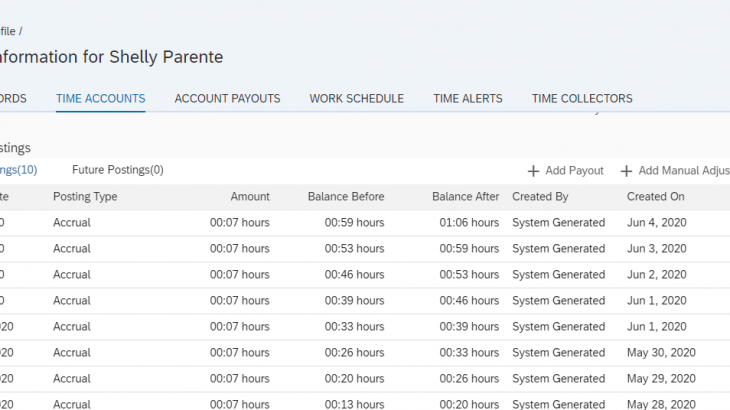Introduction
This article is about the configuration of leave balances / absence quotas / time accounts for employees, so that they can request for leave. This pertains to the Time Management function of Employee Central module of Successfactors.
Background
SAP HR Time Management has the flexibility of using Personnel Calculation Rules, variables defined within the time evaluation process and also T511K constants for fulfilling various business requirements.
Does Successfactors Employee Central Time Management also have such capabilities? The answer is YES. Creating business rules and rewriting them later is a much more intuitive process than PCRs and time schemas with on-premise time management.
Also Read: What is SAP SF EC Certification?
Contents
This article contains the below two scenarios:
- Simple Accrual: We look at a basic scenario of a new absence quota (time account type) being created, an absence (time account) linked to it, and automatic generation of accruals being configured.
- Complex Accrual: We delve deeper into the business rule to help cater to real-life organization policies about how employees in different departments can avail leave.
Disclaimer: The employee names, company names, company divisions and other HR objects seen in screenshots in this article are completely fictional. They are from a demo system and any resemblance to real-life persons is purely coincidental. The below article should only be used as a guideline or starting point for configuring time management and it would be better to use this in conjunction with standard SAP Successfactors implementation guides.
Chapter 1: Simple Accrual
Business Requirement:
Employees should be able to avail 40 years of study leave per year.
Solution:
Create a new time account type. Name it ‘Study Leave’.

Note that account creation type is set to Recurring. This is when the employee gets a new quota (time account) at the end of every year, and the previous year’s quota lapses.

Note that the Hire Rule and Accrual Rule have been set to the newly created rule ‘Accrual_Study_Leave’.
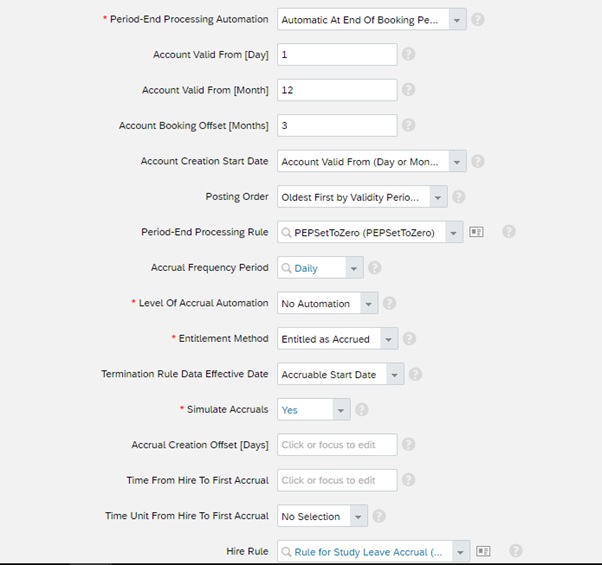
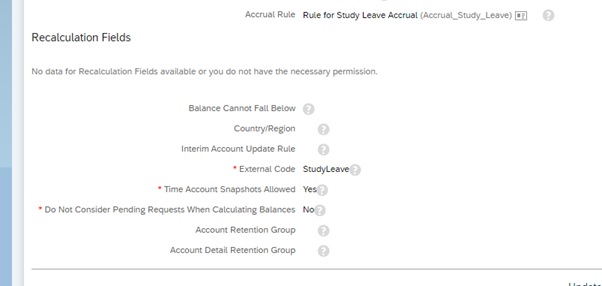
Now create a time type Study Leave.
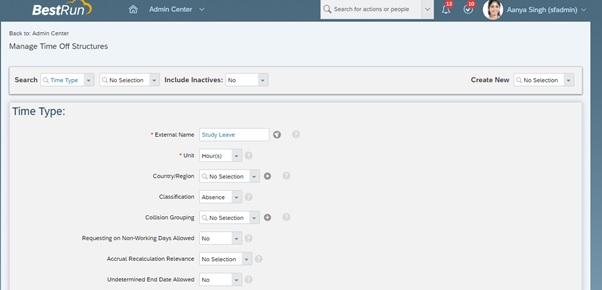
Link this new time type Study Leave with the time account type Study Leave that we have created in the Time Account Posting Rules section.
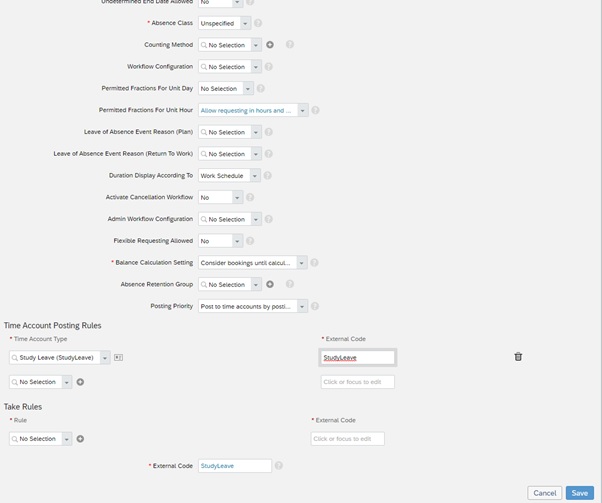
Now set the time type Study Leave to be visible for the employee’s time profile.
Our demo employee’s time profile is AUS-STD

Now to actually setting the time type Study Leave to be visible for the employee’s time profile.
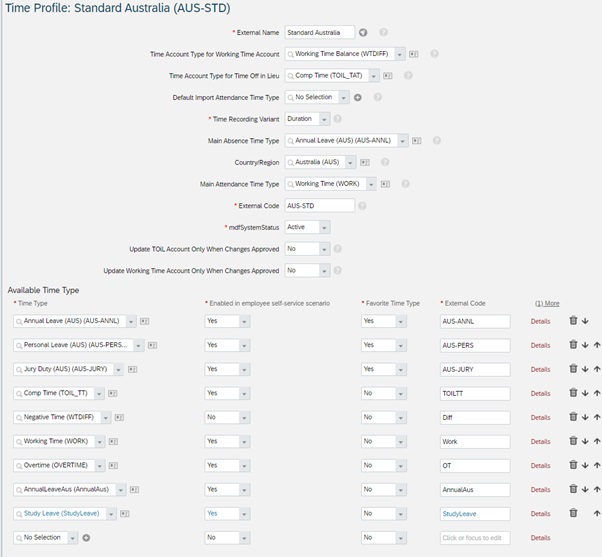
Verify that you can add hours manually to this time account type and add absence records for this time type.
We can now see Study Leave as below.
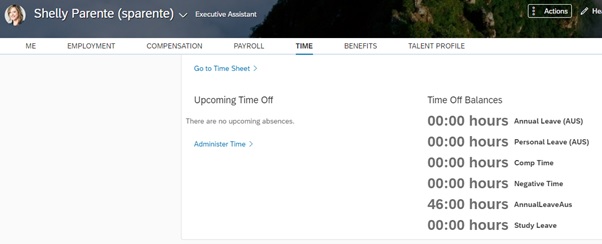
Now we create time accounts for this new time account type.
Go to Manage Time Off Calendars.
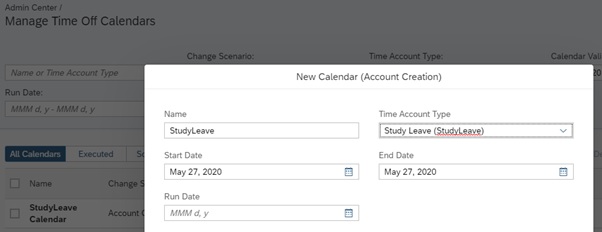
Run this calendar and then observe the output.
The run is finished as below.

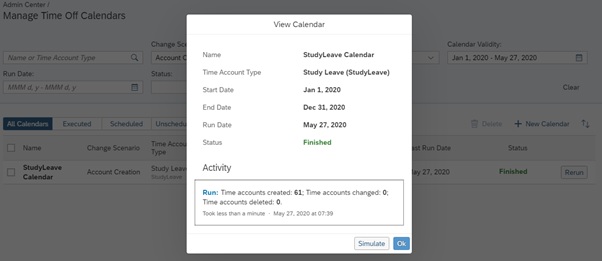
Click on Run to show the below list.
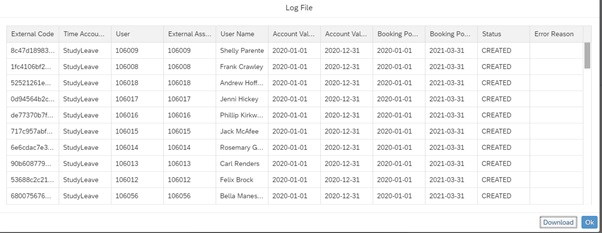
After getting the time accounts created, we define the accrual rule as below.
In this example, the study leave accrual is 40 hours per year.
Hence, the employee will accrue 40 divided by 365 hours every day.
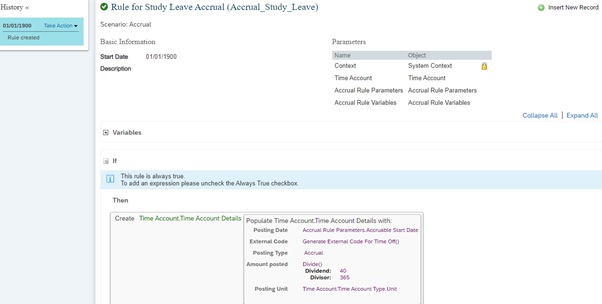
Now we test this accrual rule using Time Account Process Simulator.

Fill in mandatory fields and Run Simulation.
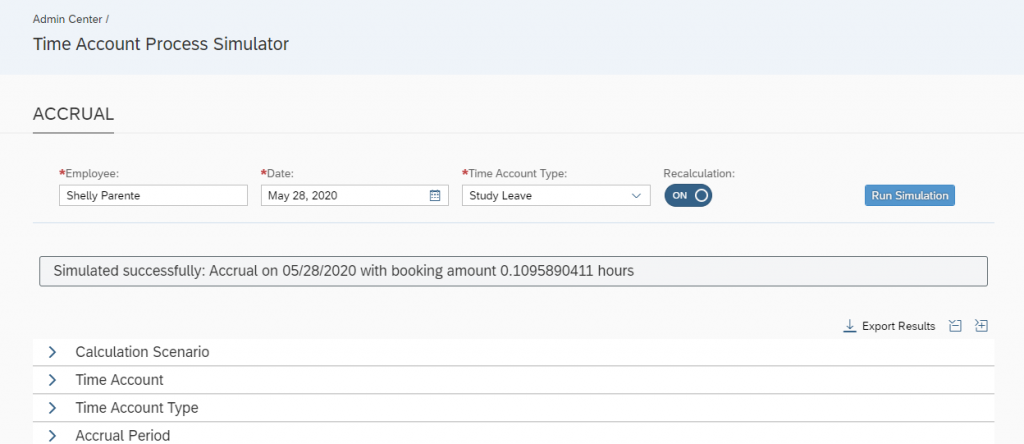
As the daily accrual amount is coming out to be correct, we can now create accrual calendars as per the below. In this example, this quota has daily accrual, hence it is scheduled to run every day.
Create a New Calendar and choose ‘Accrual’
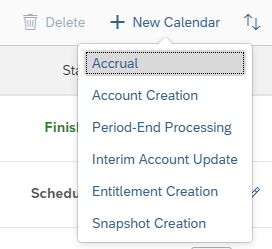
Verify the dates below and Save.
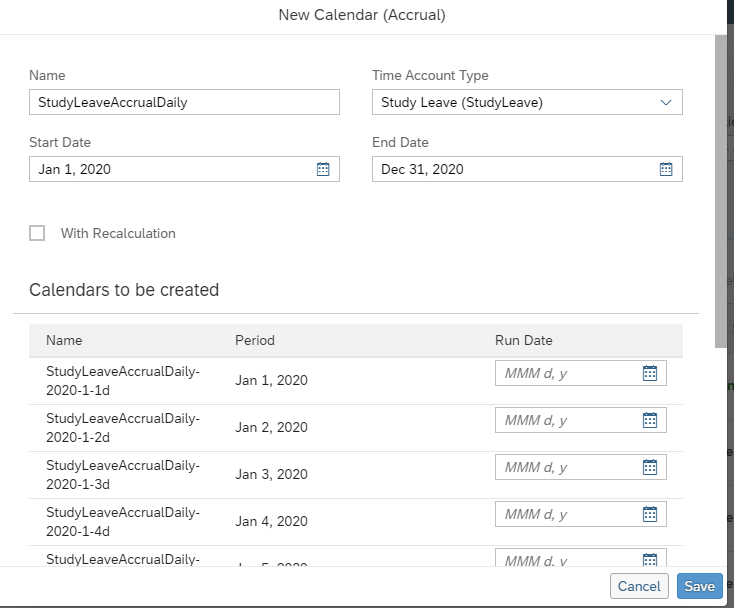
These daily accrual calendar items will run every day.
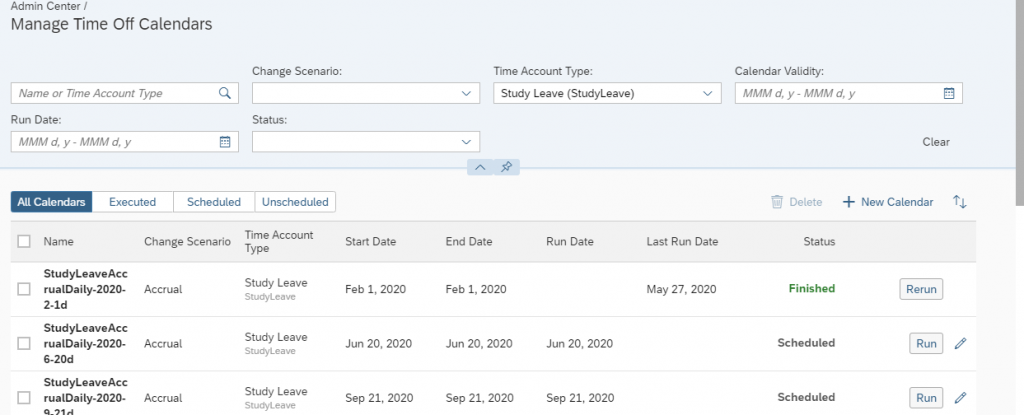
After a few daily runs, you can see how this type of leave gets accrued correctly.
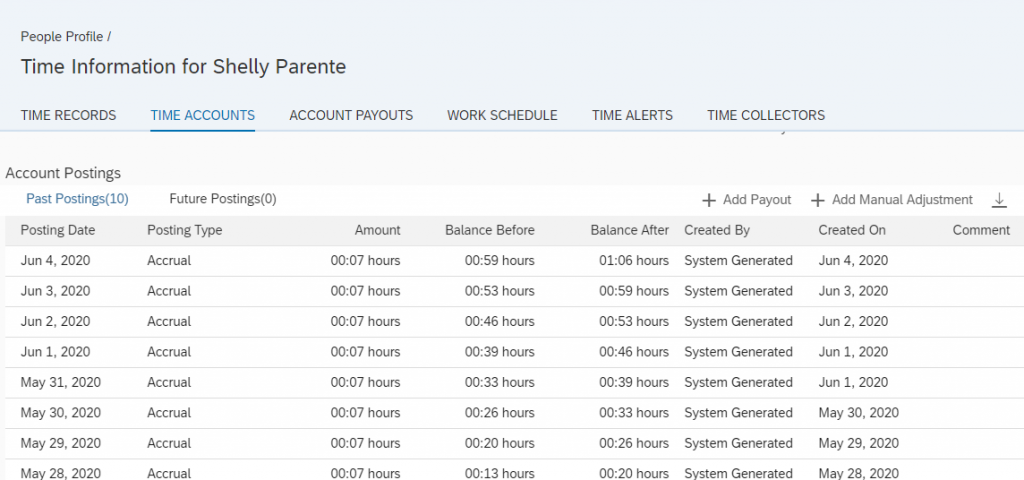
Conclusion: So, these steps of configuration enable implementation of a simple leave policy for an organization with a fixed amount of yearly leave entitlement.
Chapter 2: Complex Accrual
This was a case of simple accrual. Now we will take a more complex scenario as found in the HR agreements of most organizations. Organizations have local variations of HR policies for different types of employees and the departments they work for.
Business Requirement:
For the division MANU (Manufacturing), an employee should accrue 40 hours study leave per year. For the division EXEC, and employee should accrue 35 hours study leave per year. All other employees should accrue 20 hours study leave per year.
Solution:
Create a custom MDF object, i.e. a lookup table with an effective date, division and number of hours as the fields.
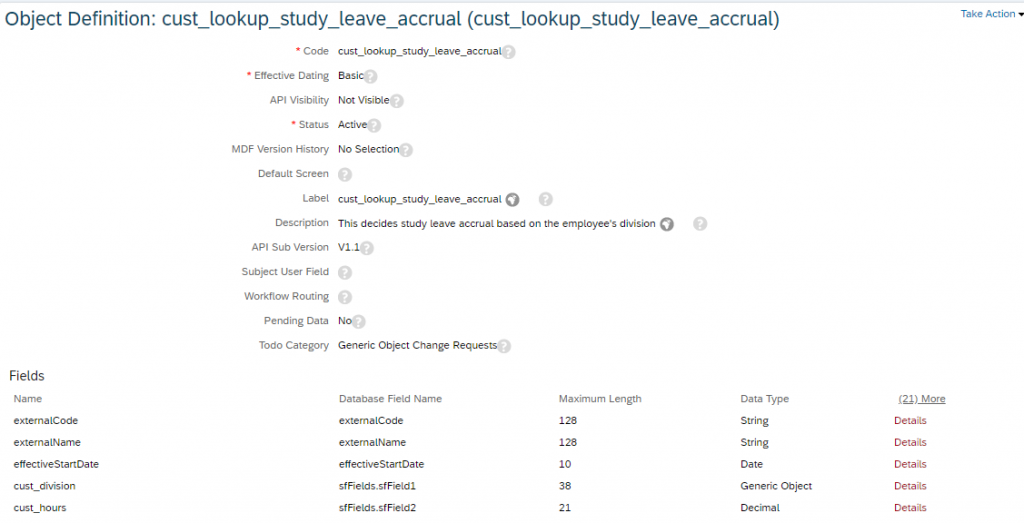
Assign permissions so that you can create data using Manage Data.
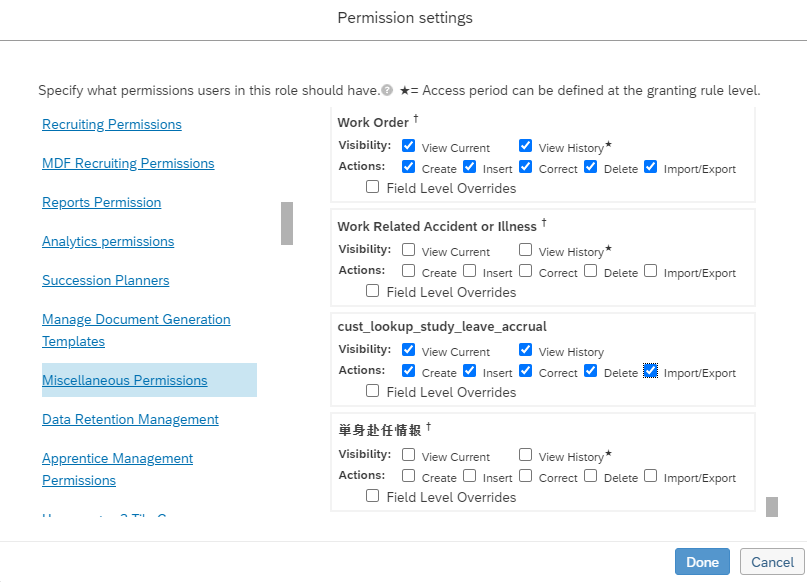
Create two objects of the Lookup Table using Manage Data (more like adding entries to the lookup table).
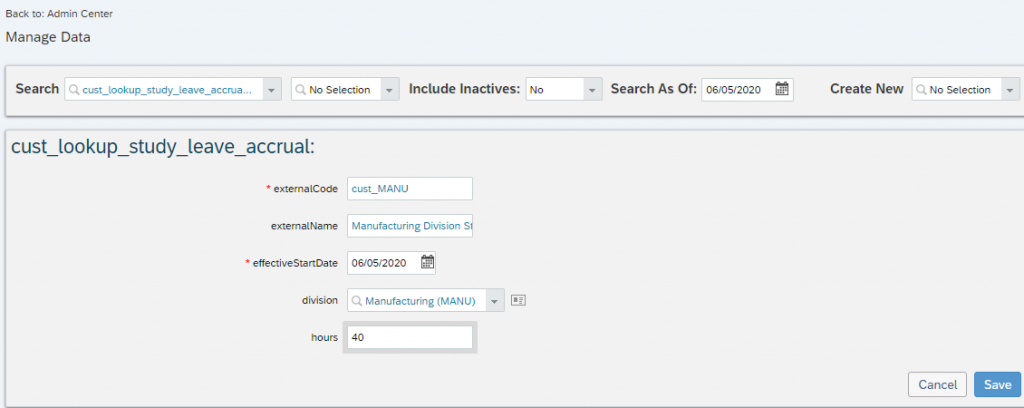
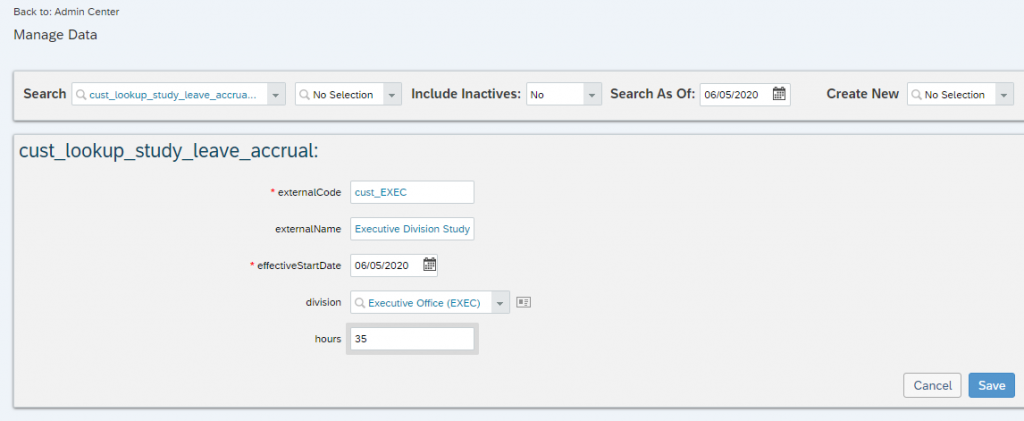
Now, we incorporate this logic inside the Study Leave Accrual business rule that we wrote earlier.

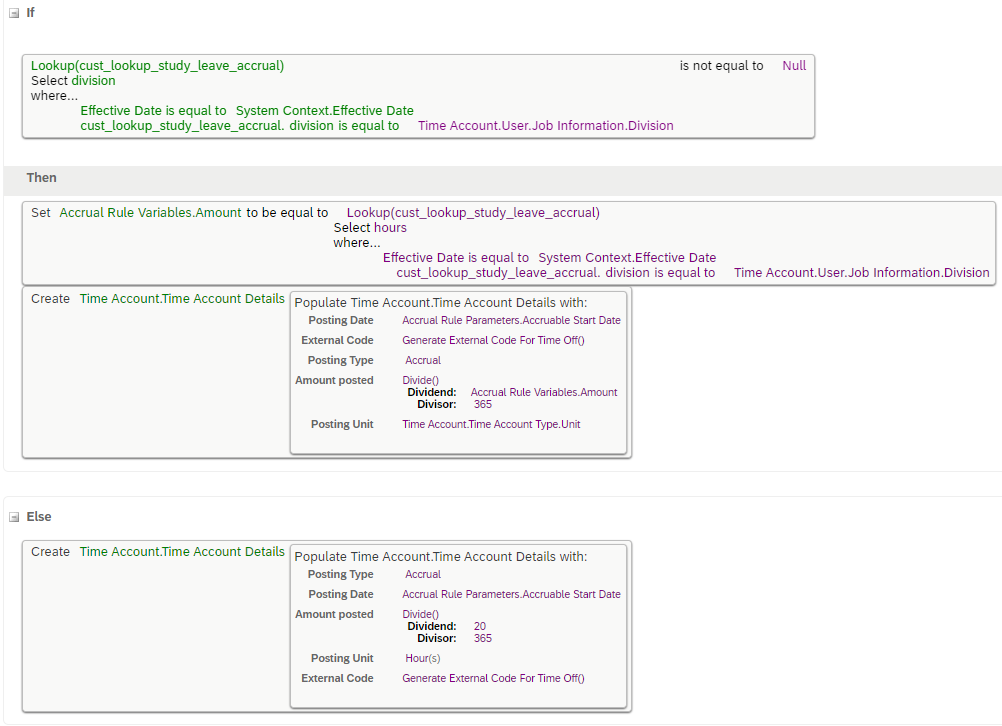
Explanation of logic written:

In this IF condition, we are trying to check if the employee’s division is present in the lookup table. If it is not present, this function Lookup() will return NULL, and the rule will go to the ELSE part.
We only have two entries in the table now.

Hence, this rule will go to the ELSE part for any other division other than the above two.
If it is MANU or EXEC division, it will go into the THEN Part as below.
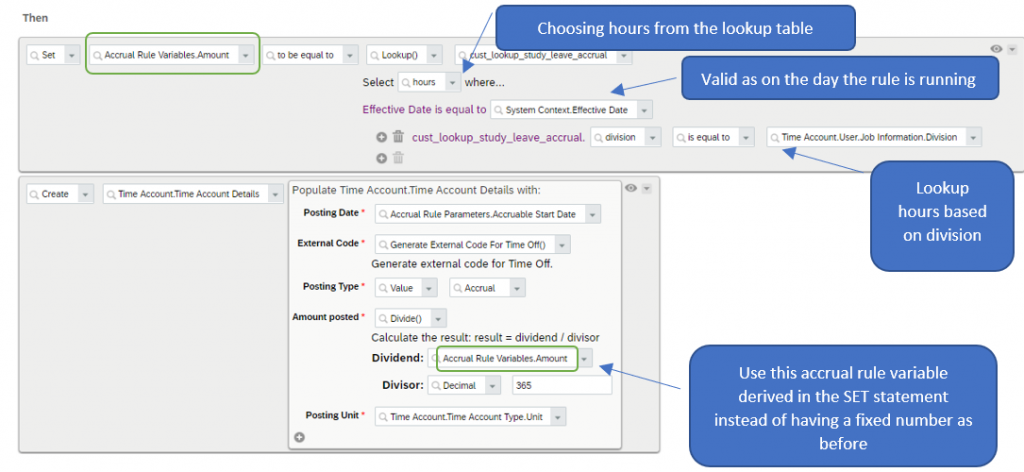
The ELSE Part looks like below.
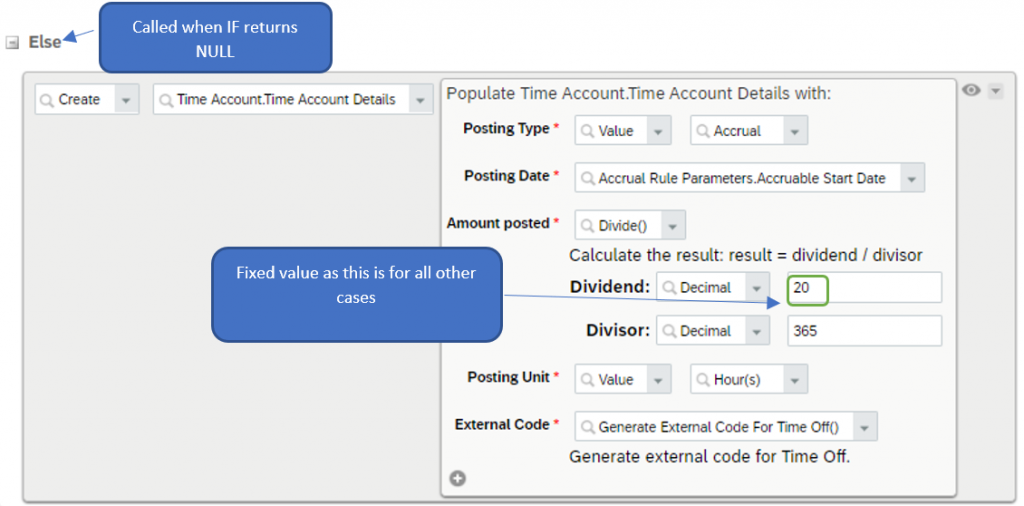
ELSE Part
Instead of manually querying the divisions in the business rule, this lookup table is a better design because:
- In a business-as-usual, if there are more divisions with their own accrual hours requirements, then the HR admin should just add new values via Manage Data or upload via an excel sheet.
- The main accrual business rule will not be touched.
We can test this using three employees as below.
- CORP_SVCS division employee

This employee correctly accrues 20/365 i.e. 0.05479 hours each day.
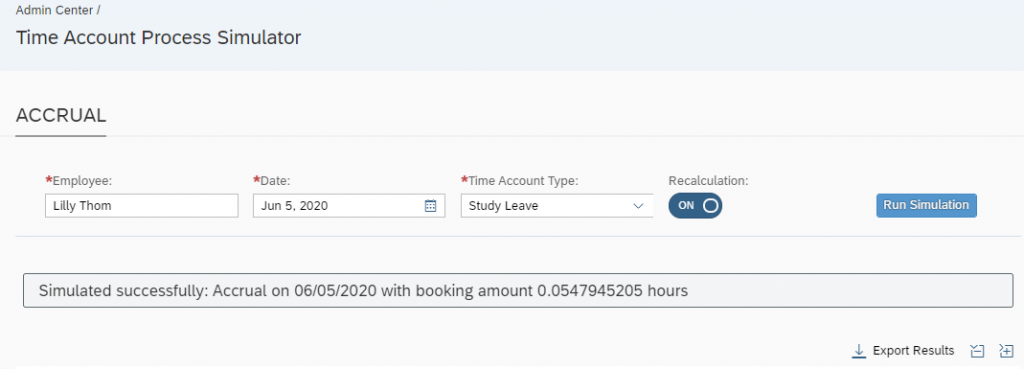
Next, we look at employees whose divisions are present in the lookup table.
- MANU division employee

This employee correctly accrues 40/365 i.e. 0.10959 hours as they are from MANU division.

- EXEC division employee

This employee correctly accrues 35/365 i.e. 0.09589 hours as they are from EXEC division.

Conclusion: These steps enable implementation of a close-to-real-life scenario with employees in different departments entitled varying number of hours to the same leave bucket.
